October Monthly Agenda
Greetings.
There will be only one workday this month. Please note that I have required training on Saturday, so that the workday has moved the to Sunday morning. We will be dealing with resprouts by the lake in workzone W1.1.3, so meet at the lower parking lot. There are a couple of large honeysuckle that need to be cut, along with some autumn olive and callery pear. Native shrubs are turning color and dropping leaves, so the invasives are easy to spot at this time of year.
- Sun Oct 29th, 9 am - noon.
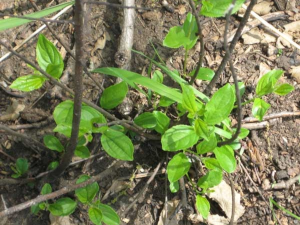
Resprouts
The priority for fall are honeysuckle, buckthorn and callery pear resprouts. This means we will be returning to areas previously cleared and taking care of any new growth. This can either be cut stumps that have resprouted, or new shrubs germinated from the seedbank. I have a number of spots were I have not returned in a few years, and already the honeysuckle is back with a vengeance.
I will admit, resprouts are a pain in the derrière, and not as satisfying as clearing areas of large shrubs. However, it want to keep these areas under control before moving on to new locations.
I have created a separate page on my web site where I will track the progress for the 2023-24 winter season.
Last Month Review
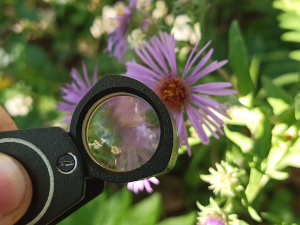
Surveys
I completed two separate wildflower surveys covering most of the sled hill, as well as a brief survey during a workday. The purpose of these surveys is threefold - to establish a baseline of existing species, to detect new species in workzones following seeding, and to gauge the abundance of invasive species.
This was actually the first time I set foot in the G3 unit adjacent the community gardens; it has been so over-run with teasel that I never wanted to navigate through the prickly stems. This year it was treated, and I didn't see a single flowering teasel plant. As you could imagine, the unit is a devoid of diversity, and consists mostly of smooth ground cherry and Indian hemp. I also had an unfortunate encounter with a bunch of stickseed. In addition to those weedy natives, we also have reed canary grass, foxtail grass, and lots of callery pear saplings.
The surveys did detect two new species in the G1.4.3 prairie - roundheaded bushclover and Illinois bundleflower. The latter was seeded from another workzone where it ceases to exist, so I'm glad it still lives on. I was able to locate the single the swamp lousewort while it was blooming, but there was no sign of the orchid.
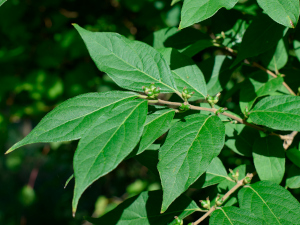
Honeysuckle Revisited
For one of my workdays, I started off the brush cutting season by dealing with honeysuckle ontop of the hill. Unfortunately, this is an area I cut back in 2018, and I failed to take care of the resprouts. In all fairness, it's still not as bad as it was back then, and not all of the honeysuckle was cleared. There are a few larger shrubs that are going to require the chainsaw.
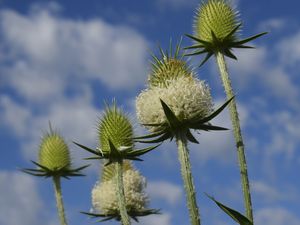
Teasel Rosettes
Yup, the battle against teasel never ends. Having previously located an area south of the lake where teasel was present, I decided to return to treat the rosettes with herbicide. In addition to the teasel, I also treated some of the burdock rosettes and a patch of field thistle. The results are mixed, so I may need to perform a second round of treatment, and follow up in spring.
From there I moved on the community gardens where I treated yet more teasel and thistle, before finishing with teasel spot treatment in the G1.4.3 prairie. While this latter spot falls under the scope of the contractor, I may be more meticulous when it comes to spraying.
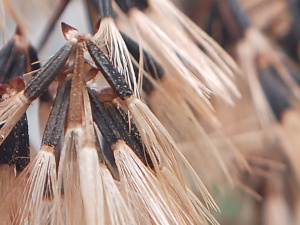
Joe Pye Weed and Friends
One of the easiest woodland plants to collect in fall is Joe Pye Weed. The seeds are plentiful and have pappus, which are tufts of hairs that catch the wind and help distribute the seed. My initial population of Joe Pye Weed was close to non-existent, but has grown considerably. This year I collected the seed from one of the first areas I seeded (F4.5) and moved this to four new spots (F2.4.2, F2.4.3, G1.4.3, W1.1.4 ), along with a little bottlebrush grass and wild rye. I have learned that it helps to broadcast Joe Pye before the trees drop their leaves, this way the seed will make contact with the soil.
I have been attempting to establish Joe Pye Weed in the F2 woods for some time, since surprisingly it was missing. I decided to spread seed in F2.4.2 as it is on the edge and less shaded, and may have a better chance establishing. From there it may move deeper into the woods. However, when I wandered through the adjacent workzone I was pleasantly surprised to find it already present. I do recall seeding it some years ago, but since I rarely enter the woods until winter, I never detected it. So yay!
With workzone F4.4 now cleared of cut brush, I harvested the Joe Pye plants that were present from prior seeding and helped spread it across the bare ground. Here I also added wingstem, late figwort, woodland knotweed and white avens collected from the F2 woods. White avens is far from a conservative species and does well in disturbed spots, and since its seed was readily available, that is what I used.
Aurora University Workday
We had a decent turnout of students for the last workday of the month, so much so we split into three activity groups. Robb took one group on a tour around the lake to pick up trash. I may have casually said it's impossible clean the entire lake in one workday, so he took that as a challenge. They were able to complete the loop within the two hours.
Heather, the new steward liaison, took her group to harvest gray headed coneflower from the bioswale at my request, and returned with 5 gallon bucket that was over half full. This will be added to other harvested seed.
My group of eight went to move brush out of F4.4 into the adjacent field in preparation of burning. I had planned to do some brush cutting, but hauling brush swallowed up all the time. We were able to build one pile on an existing burn scar, and left the rest of the brush nearby to serve as a feeder pile.

Seed Processing
Whenever I harvest seed, I like to bring it home for a little bit of processing, this way I can separate the seed from the seedheads, which allows from better seed broadcasting. Yes, I could save time and effort by simply tossing the seedheads around, but with a limited seed source, I want to get the best possible results. Waiting until winter to broadcast seed may also reduce the loss of seed to insect predation, by which point most of dead or dormant.
When it comes to the processing, all I use are basic equipment such as a kitchen colander, a couple of sized sieves, plus a variety of buckets, tubs, containers, and paper bags. You can usually pick up some of this stuff from the dollar store, but I also reuse cat litter buckets, plastic coffee containers, and paper bags decorated with the word 'Woodmans'. I do have a manual grain grinder, and I find that works well for crushing open the tough penstemon seed capsules.
The goal is to remove all the bulky plant material, and just be left with mixture of seed and chaff that is easy to handle. We don't need to separate the seed from the chaff, as the latter serves as nice filler material. What does that mean? Let's put it this way, a eighth of a cup of seed could be a hundred seeds or a half million seeds depending on the species. Spreading a such as small volume of tiny seed over a large area is difficult, unless you increase the volume significantly by mixing it with something else.
So let’s take a quick look at how I harvested and processed Rudbeckia hirta, the black eyed susan. I spent amount 30 minutes or less collecting seed from one small location, all within a 30 ft foot radius. I find it is easier to remove the seedheads from the plant with a hand sickle rather than trying to pull them off, as this way I lose less seed. It does been I collect more stems and leaves.
At home, I trim off as much excess material as possible. I then cut what remains into smaller pieces, and transfer to another bucket which I vigorously shake. Obviously I put on a lid beforehand.
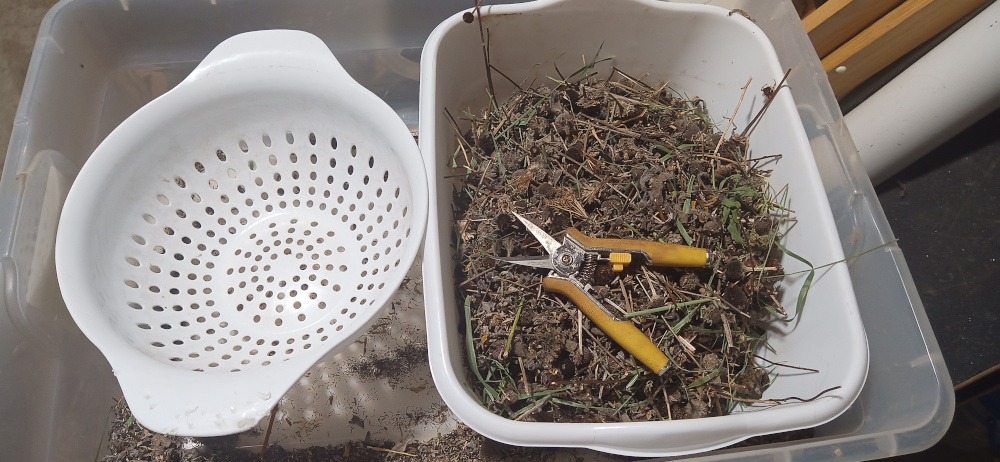
I then use a colander to filter out seeds from the larger seedheads. I repeat this process several times to extract as much seed as possible. Seedheads were fairly dry when collected, but sometimes will leave to dry longer before repeating the process.
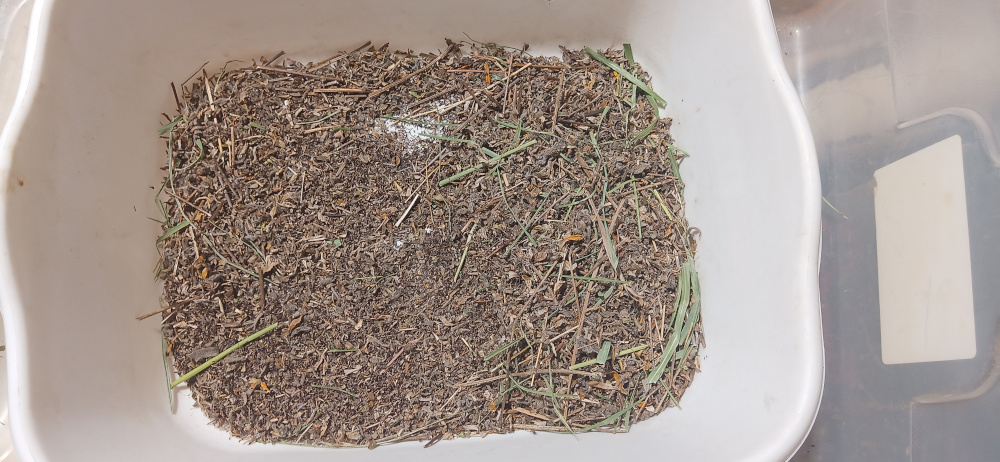
At this point I can leave the seed and chaff in the tub to fully dry out. This also allows any insects to go explore my garage. For the purpose of this newsletter, I ran the seed through a smaller sieve to remove yet more chaff and leaving mostly seed. This gives you a sense of the size of the seed in relation to what was harvested.
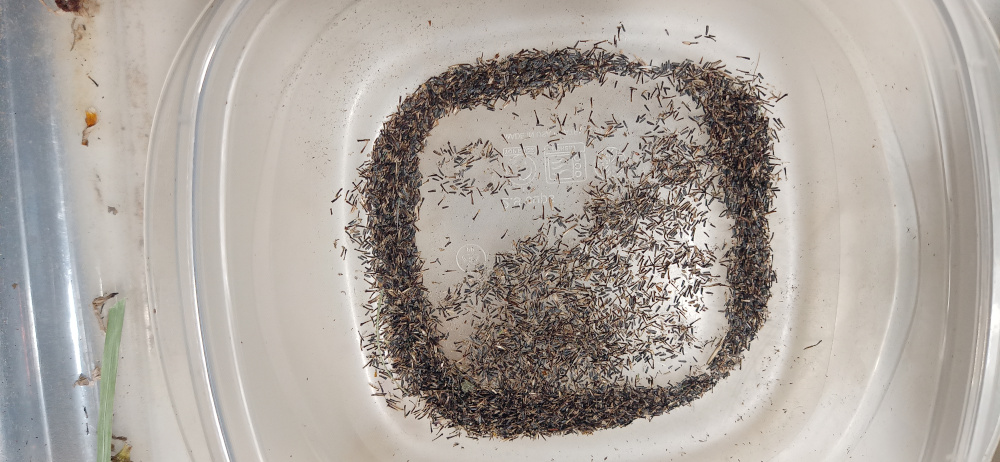
Some species have seedheads are tough, and require a the stomp treatment to release the seed. Here you will place the seedheads in a large tub, and stomp them with your feet to break them apart. Remember to wear boots. This works well for rattlesnake master and wild quinine, and possible coneflower. I then run the material through a sieve with large holes to collect the broken pieces, and return seedheads back to the tub for another round of stomping.
Seed Harvest
Purple Prairie Clover
One of the first species I made sure to collect at the end of August was Dalea purpurea, since this is only found on the slope of the bioswale. This is a conservative species with a C-value of 9 that prefers upland locations. I collected most of the seed I could find, I will broadcast this amongst the little bluestem in workzone W1.1.2. This is a dry location that slopes down from the trail to the lake, and where most of the vegetation is short. As I have a specific location were I want to broadcast all of the seed, it is stored in it on own container, and will be supplemented with other species.

Wetland Mix
There are several wetland species that I also collected from the bioswale, most of which are graminoids. This includes dark green bulrush - which is a prolific seeder - bottlebrush sedge, soft bulrush, Torrey's rush, and blue flag iris. To this mix I also added some fox sedge that I collected from south side of the hill. These are all obligate wetland species, so will seed areas that are seasonally wet in spring and or immediately adjacent the lake. To this mix I will also add any blue vervain and swamp milkweed I am able to harvest.
Obedient Plant
My small population of obedient plant took a hit when they installed a new path through workzone G1.1.1, so I want to establish a several populations elsewhere. I harvested the first week in September when most of the seedheads where still green, so was worried it was a little early. As it happens, a lot of the seeds willingly fell out when placed in a bucket, and even more when it was shaken. So I think they were ripe. Lots of seedbugs were also present, so harvesting may also reduce predation. As this is a facultative wetland plant, I intend to split the seed between the bioswale and the G1.4.3 prairie . Seed will be stored separately until ready to broadcast.
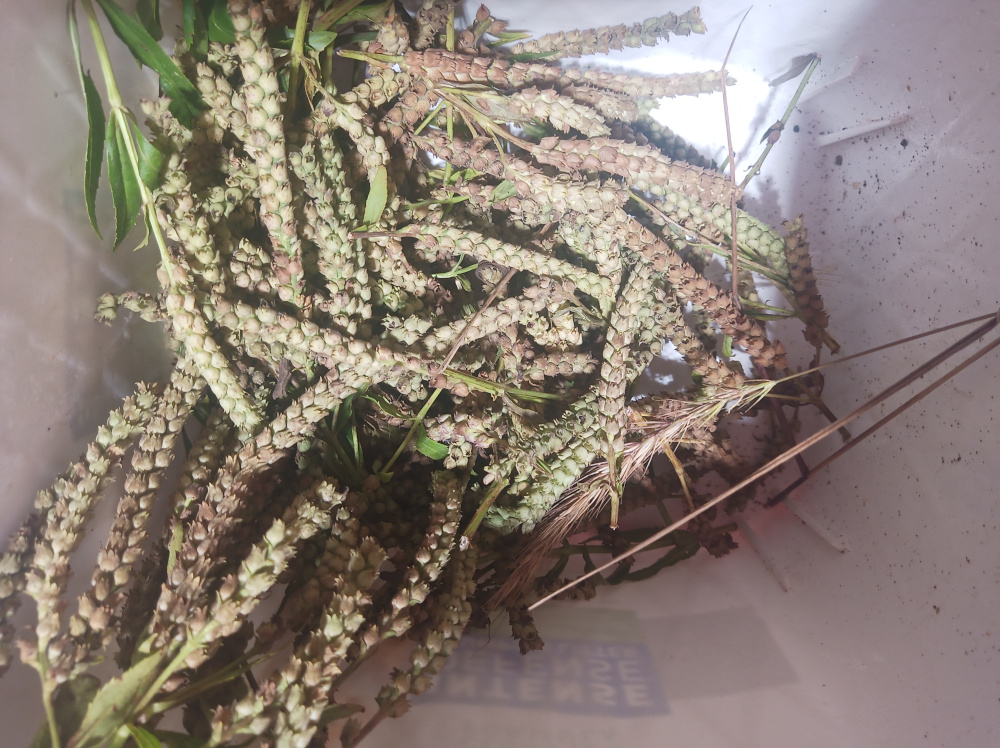
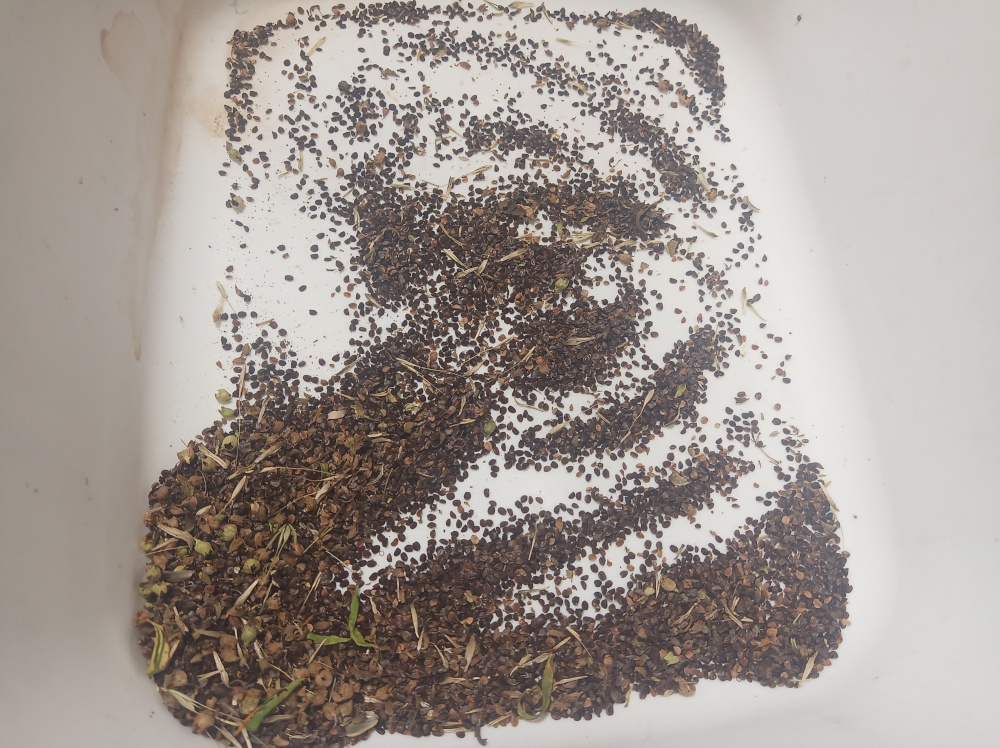
Just Spread It Everywhere Pollinator Mix
There are several core species that are easier to collect, produce a ton of seed, and are quick to establish. As these have a wetland code from facultative (FAC) to upland (UPL), they are going to do well in most locations around hill. This mix currently includes harvest wild bergamot, yellow coneflower, foxglove beardstongue, Rudbeckia, and Silphium species. I intend to supplement with tall coreopsis, tick trefoil, cream gentian, milkweed and false sunflower this year. Asters usually disperse themselves with the aid of the pappus and wind, but I have add some to ensure the seed lands in the right spot.
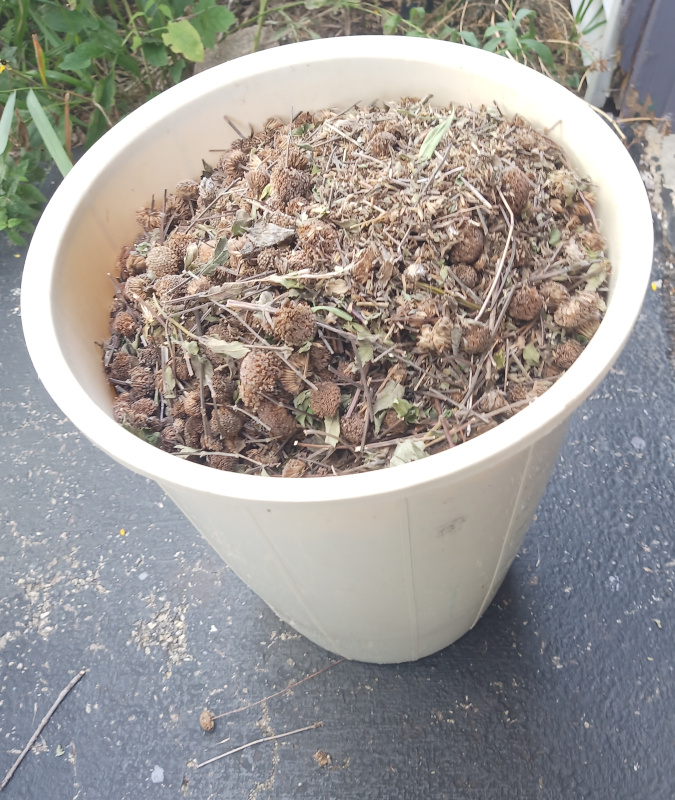
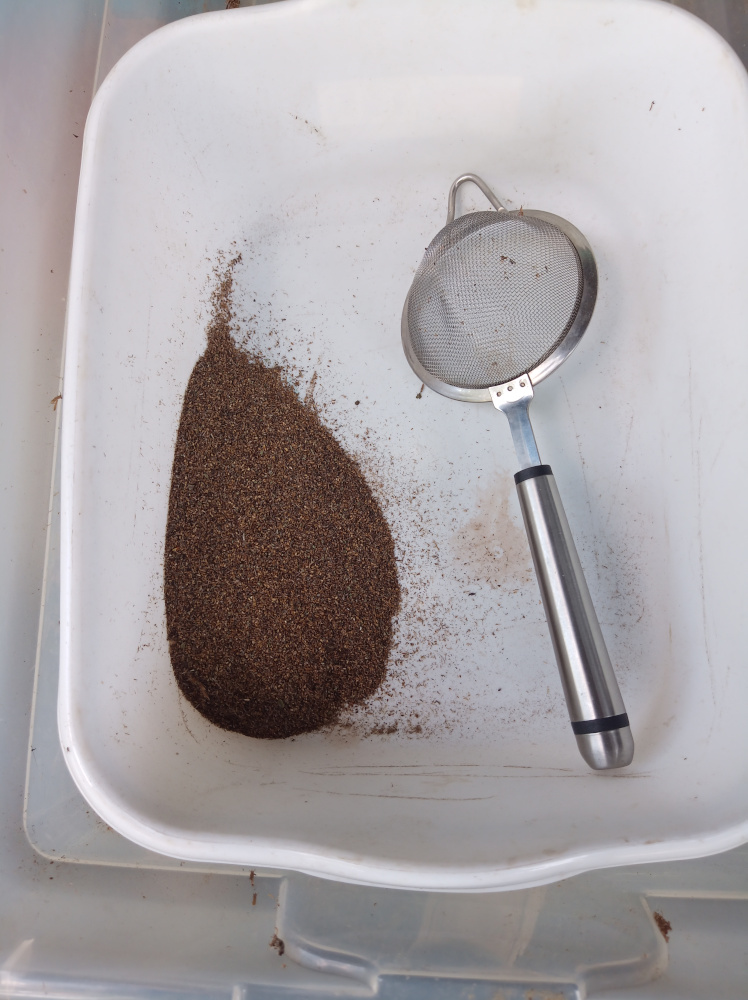
Above is a large bucket of monarda seedheads, and a sample of the seeds. I'm not entirely sure how much was collected, but may have been a fifth a 27oz Dunkin's plastic coffee container.
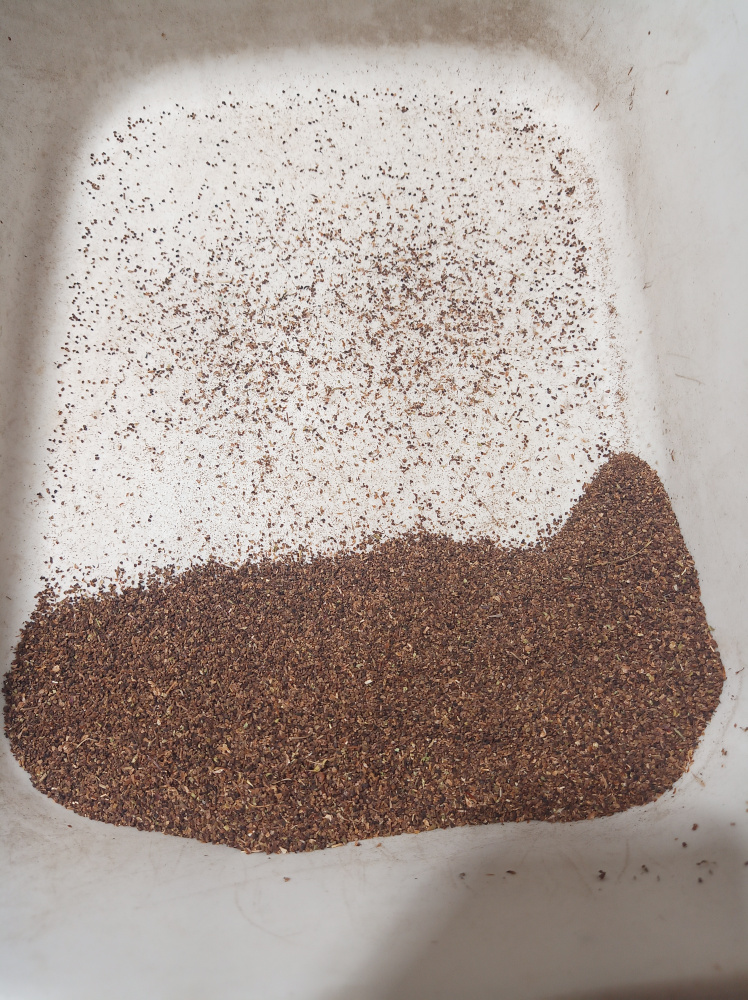
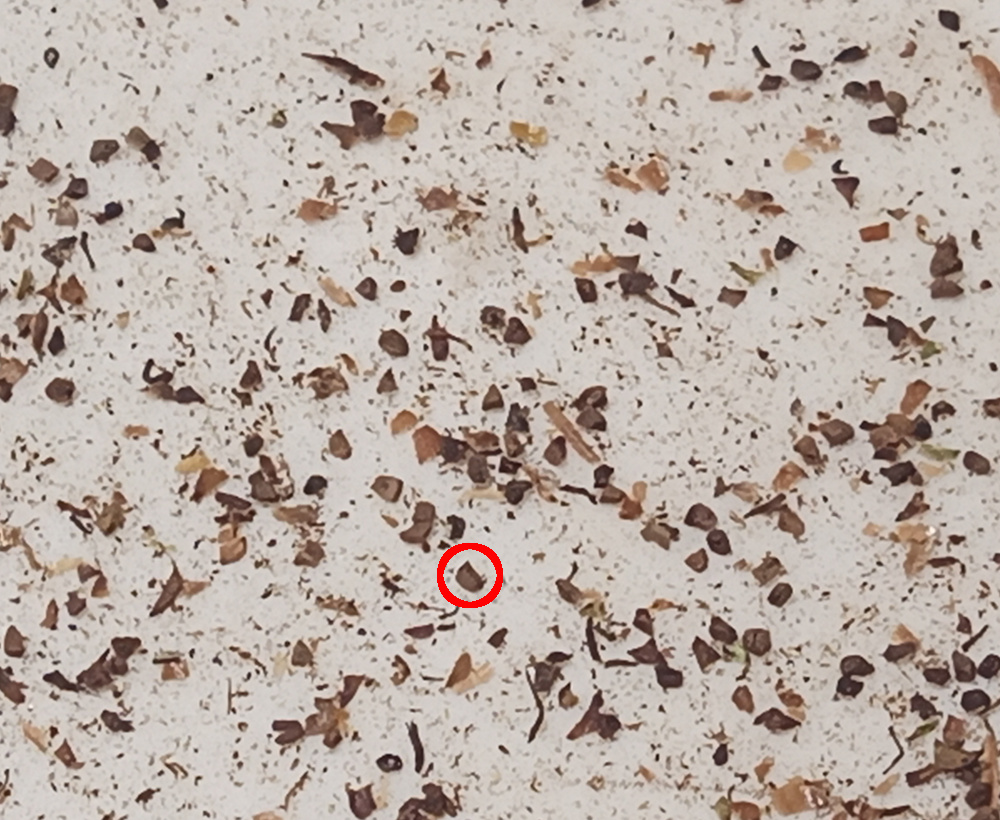
Penstemon after running through the mill. Most of this is broken up capsules, but I highlight one of the tiny seeds....I think.
The Fungus Among Us
Unfortunately this year I did not get around to doing any fungus monitoring, but I did come across several new species in September.
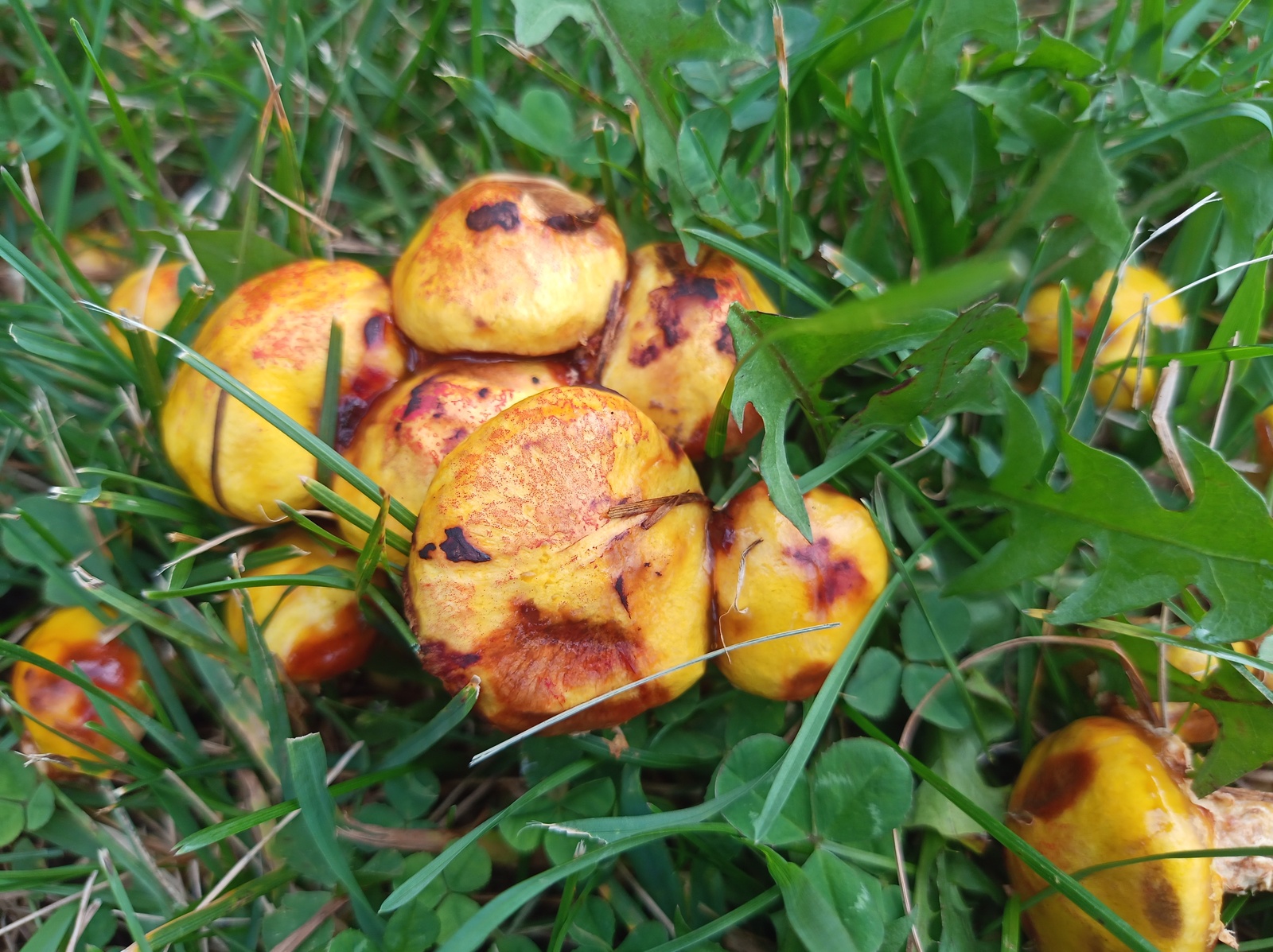
Growing the near the upper shelter was Chicken Fat Mushroom, Suillus americanus, also known as the American Slippery Jack. This bolete was growing underneath the white pine, with which it has a mycorrhizal association. As the name suggests, it is slimy to the touch.
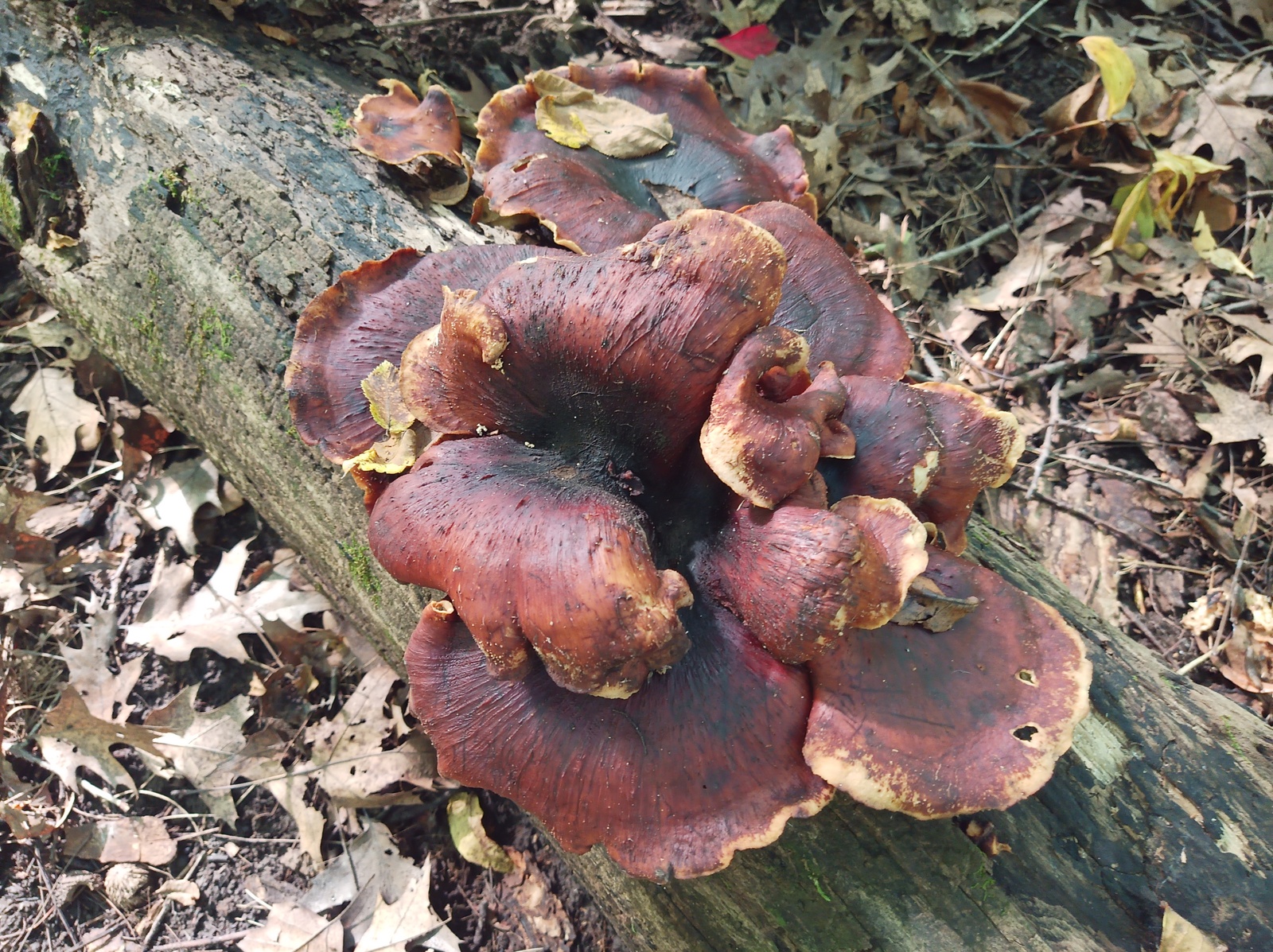
The second species I came across, this time in the woods, was the Black footed Polypore, Polyporus badius.
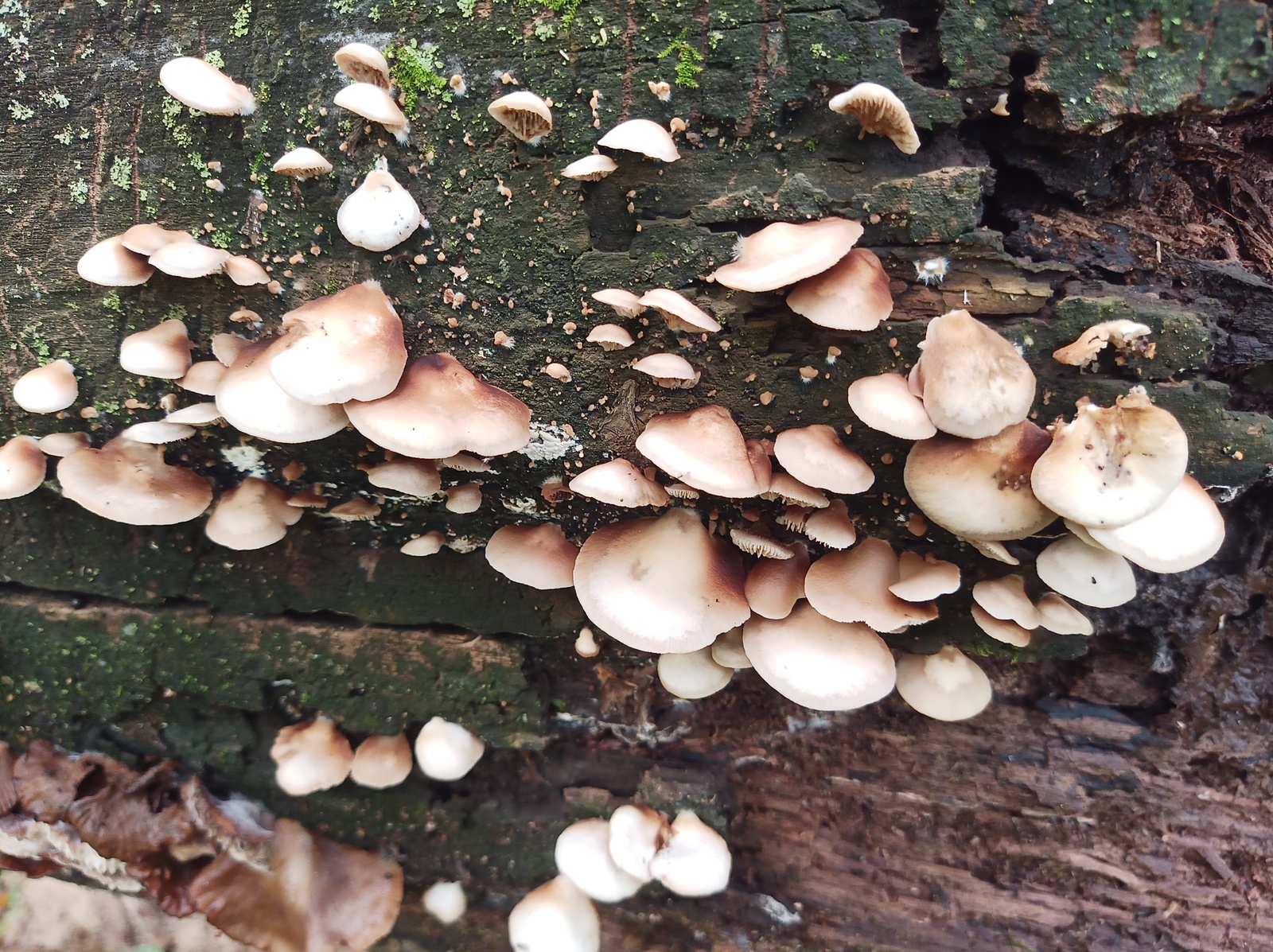
Also in the woods was a species of Crepidotus, possibly Flat Crep (Crepidotus applanatus) or a one of its close relatives.

 Volunteering
Volunteering Safety
Safety Wildlife
Wildlife Newsletter
Newsletter